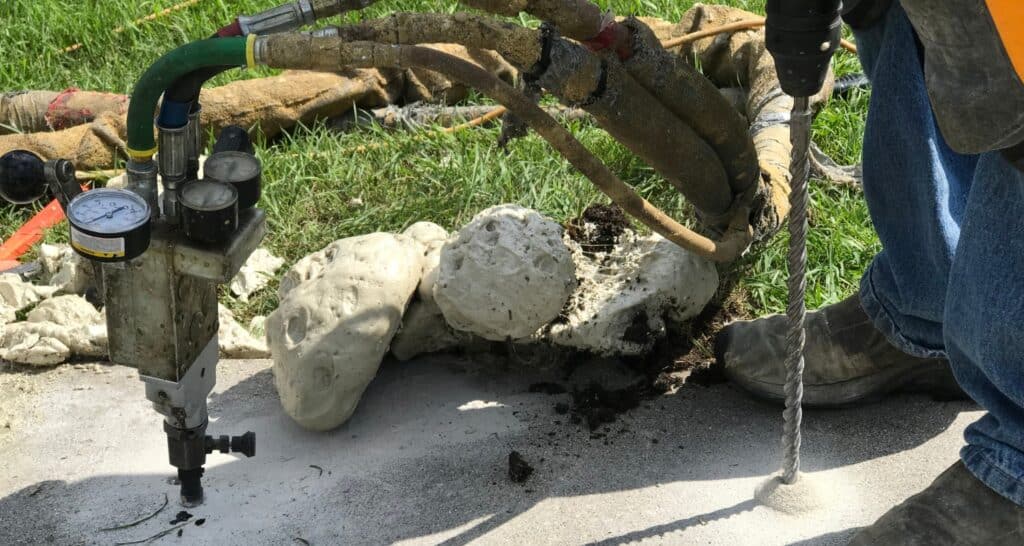Mud jacking, also known as slab jacking or concrete lifting, is a cost-effective method of repairing uneven or sunken concrete slabs. It’s a straightforward process where a slurry mixture, often made of water, soil, sand, and cement, is pumped underneath the concrete slab. This elevates the slab back to its original level, rectifying the unevenness caused by various factors such as soil erosion or settlement. The technique has been around since the early 1900s and is widely used due to its affordability, speed, and effectiveness.
In this article, we’ll discuss the various aspects of mud jacking, such as its advantages and disadvantages, cost considerations, what to look for in an experienced contractor, and more. With this comprehensive guide, you’ll be able to make an informed decision that best suits your needs and budget.
What Is Mud Jacking?
Mud jacking is a process where a concrete slab is lifted by pumping a slurry mixture of mud, water, and cement beneath the slab. This method is simple, fast, cost-effective, and can be used to elevate sunken or uneven slabs back to their original level. The process involves drilling several small holes in the affected area before injecting the slurry mixture into them. The pressure created lifts the slab and fills any voids beneath it. This method is preferred to other techniques such as replacing or resurfacing the existing slabs as it is quicker, cheaper, and can be used on a variety of surfaces.
Advantages and Disadvantages Of Mud Jacking
Mud jacking offers many advantages over traditional methods of concrete repair. It is fast, cost-effective, and requires minimal disruption to existing structures. It is also a reliable solution as it can be used on all types of concrete slabs, regardless of width or thickness.
The primary disadvantage of mud jacking is that it may not provide a permanent fix for the problem. The material used in the process may settle over time causing the slab to sink again. Additionally, the process also requires a certain level of precision and expertise which can be hard to find in many contractors.
Cost Considerations
The cost of mud jacking depends on several factors such as the size of the area, the type and complexity of the job, and other additional materials needed for completion. However, it is usually a fraction of the cost compared to other methods of concrete repair. It’s important to note that mud jacking involves several small holes drilled into the surface before injection, so it might be necessary to fill in these holes with patching material afterward. This will add some additional costs.
What To Look For In An Experienced Mud Jacking Contractor?
When looking for a mud-jacking contractor, it’s important to take into account their experience and expertise. Look for contractors who have extensive experience in the field and are familiar with local regulations and building codes. For example, if you’re in Ogden, Utah, you should look for mud jacking experts who are familiar with the local area. Additionally, check to see if they’re insured and bonded so that you can rest assured that any work done is backed by their insurance policy in case of any mishaps.
It’s also important to ensure that the contractor uses high-quality materials and follows industry best practices. Ask for references from previous customers and read reviews from them to get a better idea of their level of service.
So, if you’re looking to repair uneven or sunken concrete slabs, mud jacking is a cost-effective and reliable option. With the right expert contractor, you can rest assured that the job will be done correctly and efficiently. Whether it’s a small or large project, understanding the process of mud jacking will help you make an informed decision and get the best value for your money.

Welcome to our blog! My name is Yuvraj Kore, and I am a blogger who has been exploring the world of blogging since 2017. It all started back in 2014 when I attended a digital marketing program at college and learned about the intriguing world of blogging.
